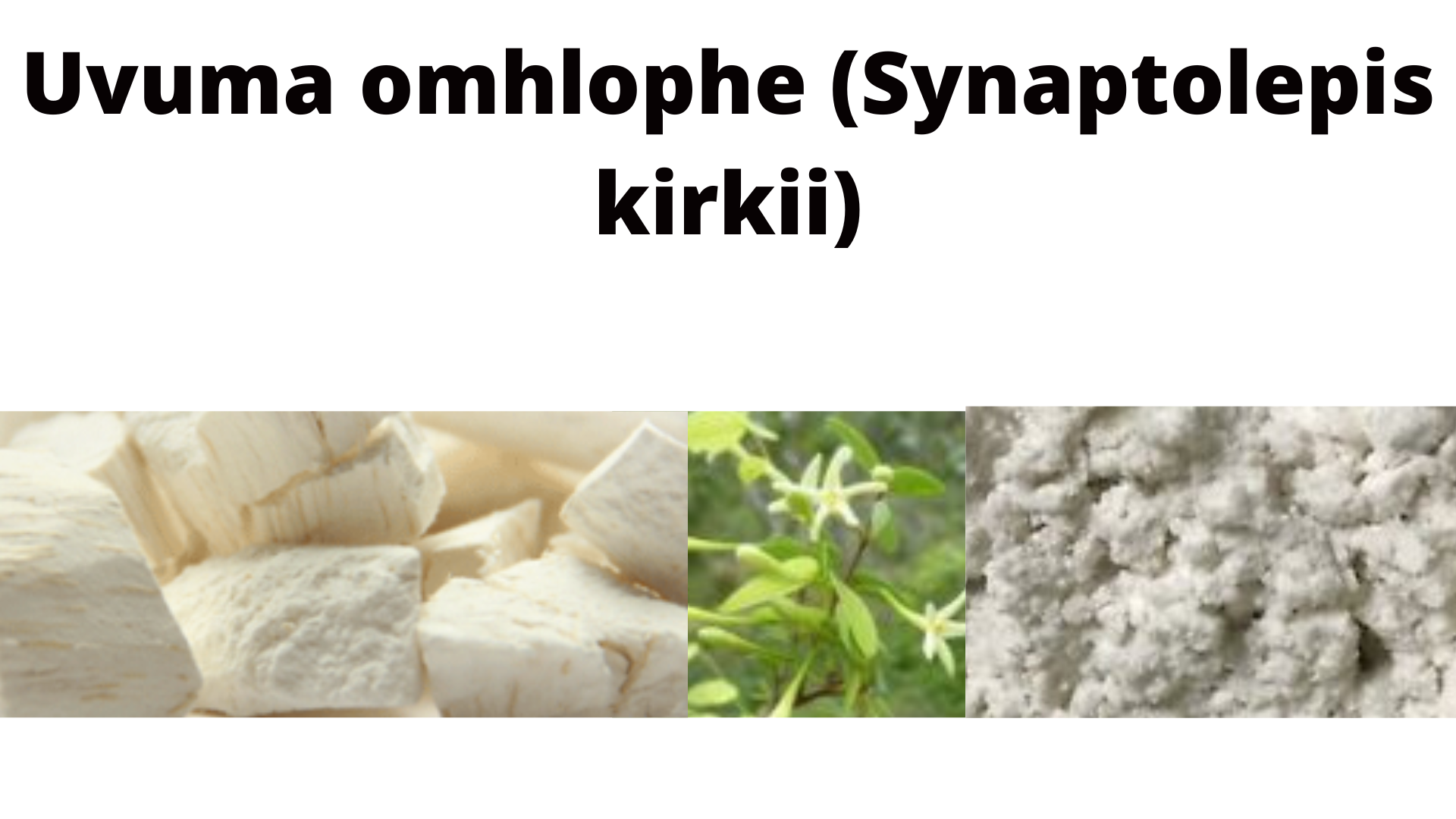Family: Thymelaeaceae
Scientific name: Synaptolepis kirkii
Authority: Gilg
Common names: uvuma omhlophe (Zulu), chalk-stick root (English)
Synaptolepis kirkii is an oneirogen (hallucinogen) plant, a plant that produces a dreamlike state of consciousness. The plant is native to Africa and predominantly used by Zulu people. Zulu people believe that the plant has the ability to help one connect with their ancestors through dreams. The plant has the ability to induce vivid dreams and lucid dreaming or visions.
Benefits
- The plant contains kirkinine a potent neurotrophic which helps to repair and regrow nerve cells. This promotes healthy brain structure
- It helps manage anxiety by lifting the mood
- It promotes peaceful sleep
- It increases in wellbeing
- It treats snakebites
- It is one of about 100 plant species that are used to treat convulsive conditions such as epilepsy, fits, and convulsion
Traditional uses
The root is the part of the plant that is preferred in traditional medicine to treat a number of conditions, ailments, and diseases. Traditional healers use the root to make an emetic mixture, known in Zulu as ubulawu (not to be confused with Silene capensis the plant). Ubulawu is any type of mixture made from oneirogen plants to induce lucid and vivid dreaming and to improve and sharpen memory. Plants are not ubiquitous, traditional healers use plants that are available in their area to make mixtures. Hence, ubulawu made by Zulu traditional healer will differ from that of Xhosa healers and so on.
During initiation, traditional healers drink ubulawu in the morning to induce emesis. The plant contains saponins that causes mixture to make form, the form is used to take ritual (or spiritual) baths and/or to wash the face.
Preparation
To make ubulawu – pounding the roots to powder, adding them to room temperature water. Twirl the mixture until form froths up. This mixture is taken orally until the stomach is full. Emesis may begin spontaneously after drinking the emetic or may be induced by triggering the gag reflex using the fingers.
The roots are also added to hot water to make an infusion that is taken orally before going to bed for a peaceful and sleep.
Oneirogens around the world
- Aztec dream grass (found throughout America)
- Blue lotus flower (native to Egypt)
- Mugwort (native to Europe and Asia)
- Sinicuiche (native to North America & Mexico)
- Sugandi root (native Asia)
- Wild asparagus root (native to India, Nepal, and Tibet)
- Wild lettuce (native to America)
You can buy uvuma omhlophe: https://imithiyesintu.co.za/shop/uvuma-omhlophe-powder-50g and https://imithiyesintu.co.za/shop/uvuma-omhlophe-whole/
South Africa has an abundance of oneirogen plants used by traditional healers to make ubulawu. To learn about other oneirogen plants access the following resources Alepidea amatymbica – psychoactive plant, Silene Capensis (ubulawu), Helinus integrifolius (ubhubhubhu), Top 10 plants used for divination by Zulu traditional healers in South Africa. You can also learn about induced emesis by accessing ukuphalaza – induced emesis – kunjal kriya. Discover how ubulawu and induced emesis are used to treat spiritual illnesses with an underlying animalistic cause.
Safety precaution
The use of traditional medicine in prescribed dosages will yield good results. Misuse and abuse may lead to complications. To learn about correct dosage, consult a traditional healer or a herbalist. You can also visit imithiyesintu.co.za or email: info@imithiyesintu.co.za to learn more about traditional medicine.
